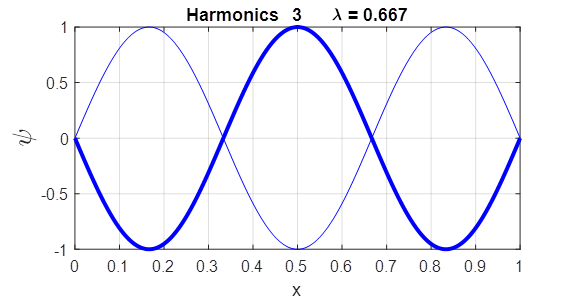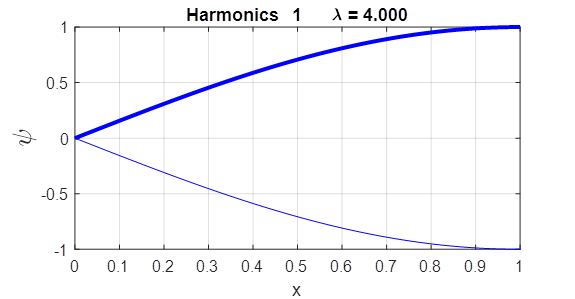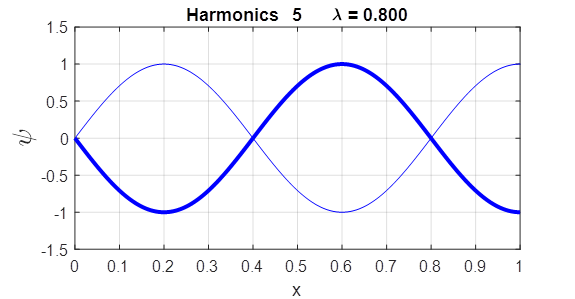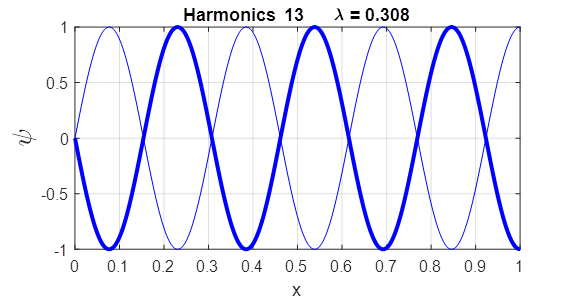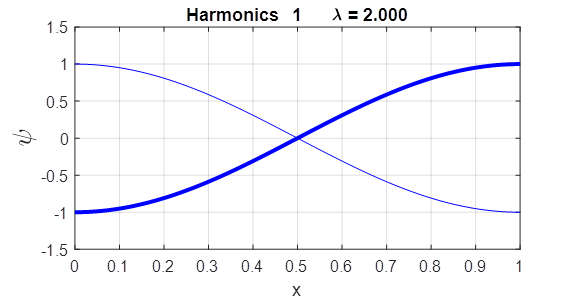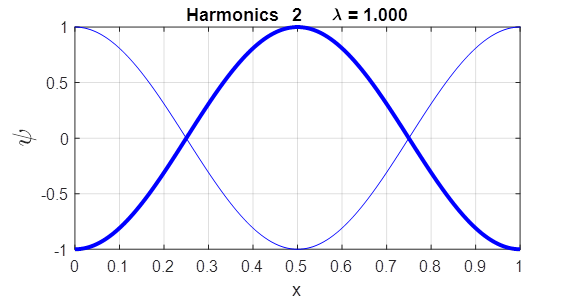|
NORMAL TRANSVERSE
MODES OF A VIBRATING ROD EIGENVALUES and
EIGENFUNCTIONS Any comments, corrections or suggestions, please email Ian Cooper at |
|
MATLAB SCRIPTS wmRodm.m
https://github.com/D-Arora/Doing-Physics-With-Matlab/blob/master/mpScripts/wmRod.m wmRod.mlx (live editor version) https://github.com/D-Arora/Doing-Physics-With-Matlab/blob/master/mpScripts/wmRod.mlx The eigenvalues and eigenfunctions for the transverse normal modes of a vibrating rod are found using the Matlab function eig. For a more in-depth treatment visit HELMHOLTZ
EQUATION - EIGENVALUE PROBLEM - STANDING WAVE ANIMATIONS |
|
The spatial wavefunction describing the transverse normal modes of a vibrating of a rod can be found from the Helmholtz equation
(1)
where the
wavefunction
(2)
This is simply
an eigenvalue problem, where The second
derivative of the wavefunction
(3) The X domain is
divided into N+2
evenly spaced grid points where Fixed /
Fixed ends (Node/Node) Fixed /
Free ends (Node/Antinode) Free /
Free ends (Antinode/Antinode) For the interior grid points, equation 1 can be expressed in matrix form (4) where (5) The eigenvalues and eigenvectors are found using the Matlab function eig. % Eigenvalue Matrix A: eigenfunctions (eignFN)
/ eigenvalues (eignV) off = ones(N-1,1); A = - diag(off,-1) + 2*eye(N) - diag(off,1)
; if BC == 2; A(N,N) = 1;
end
% fixed free if BC == 3; A(1,1) = 1; A(N,N)
= 1; end %
free free [eignFN, eignV] = eig(A); Each column of the first matrix eignFN is the eigenvector (eigenfunction) and the diagonal elements of the second matrix eignV are the eigenvalues. Using the Live editor version of the Script wmRod.mlx, one can change the boundary conditions and mode number and view a plot of the wavefunction immediately. The title of the plot shows the harmonic displayed and the wavelength. EXAMPLES Rod fixed at both ends
Rod fixed / free ends
Rod free / free ends
|




